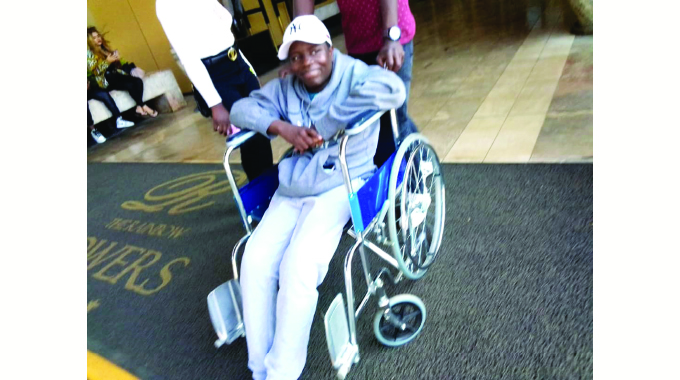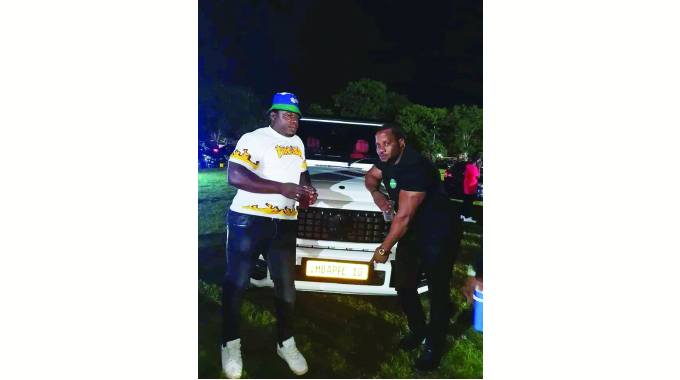Sickle Cell Anaemia: When constant pain is their portion

Rumbidzayi Zinyuke Health Buzz
Pain is one thing that no one can endure for a long period.
In most cases, everyone rushes to seek medication as soon as they feel a part of their body is in pain.
But for Tawananyasha Bisalomu (17) and others who suffer from Sickle Cell Anaemia, pain is constant.
From the time he was born in 2005, Tawananyasha was a sickly child. According to his mother, Ms Rachel Batani, he would cry constantly but they had no idea what was wrong with him.
As a toddler, he was in and out of hospital.
As he grew up, he constantly complained of back pain, headaches, joint pain, chest pains and his hands and feet were often swollen.
“Every time we went to hospital, Tawana would get some medication and would get better for that time and go back to school. But the pain would always come back.
“As a result, he never really got proper education since he was at home more often than in school,” said Ms Batani.
On November 16, 2019, Tawana got very sick while at school. The doctor referred him for tests which revealed for the first time that he was suffering from sickle cell anaemia.
Sickle Cell Anaemia is a genetic disorder which causes red blood cells to lose their shape and break down. Red blood cells usually live for about 120 days before they need to be replaced. But sickle cells typically die in 10 to 20 days, leaving a shortage of red blood cells (anaemia).
“The shortage of healthy red blood cells can block blood flow causing pain (sickle cell crises).
People suffering from sickle cell anaemia may experience pain in the joints, sudden pain in the chest, dizziness, fatigue, low oxygen in the body or sickness.
“Their bodies may also fail to make concentrated or dilute urine and they can have blood in their urine. Frequent infections are also common since sickle cells can damage the spleen, increasing vulnerability to infections.
Infants and children with sickle cell anaemia commonly receive vaccinations and antibiotics to prevent potentially life-threatening infections, such as pneumonia.
Red blood cells also provide the body with the oxygen and nutrients needed for growth so a shortage of healthy red blood cells can slow growth in infants and children and delay puberty in teenagers. It can also cause vision problems as sickle cells can damage the retina, the portion of the eye that processes visual images, and lead to vision problems.
Treatment depends on severity and can include medication, blood transfusions and rarely a bone-marrow transplant.
Periodic episodes of extreme pain are the major symptom of sickle cell anaemia. The pain varies in intensity and can last for a few hours to a few days.
A severe crisis requires a hospital stay. Some adolescents and adults with sickle cell anaemia also have chronic pain which can result from bone and joint pain damage, ulcers and other causes.
After a prolonged sickle crisis in 2009, Tawananyasha started walking with a limp and he was now in constant pain.
Between March and June 2020, he was in and out of hospital at Karanda Mission Hospital, getting oxygen, blood transfusion and supplements. But his condition did not improve much.
Because of the Covid-19 lockdown in 2021, his parents could not travel to Karanda so they took him to Parirenyatwa Group of Hospitals and he got admitted for two weeks.
That is where they discovered that the long pain crises he had suffered when he was in Form two, had caused a hip fracture and this was why he had a limp and always complained of back pain.
Since then, both hips have fractured and he can no longer walk, stand, or sit properly. He currently uses a wheelchair but he still feels pain when he sits in the chair.
“Tawananyasha now needs a total hip replacement for him to be able to walk again.
“But that surgery can only be done when he turns 18 next year. We have been paying for all his medical bills from our own pocket since he was a baby and we also got financial help from work. But now we are struggling to raise the money needed for his surgery. We need to raise US$10 000 for the hip replacement but it is difficult for us,” said Ms Batani.
Although he goes for physio therapy every two weeks, surgery remains his only hope for a better life, with a little less pain than now.
Over 300 000 newborns globally are diagnosed with sickle cell disease (SCD) every year and the trend is expected to continue increasing.
According to studies, SCD is more common throughout much of sub-Saharan Africa, affecting up to three percent of births in some parts of the continent.
“It is widely believed that this condition is associated with very high child mortality, but reliable contemporary data are lacking.
A study by the American Journal of Preventive Medicine revealed that in Africa the disease, however, remains a low priority for many health ministries.
“We have concluded that, although current data are inadequate to support definitive statements, they are consistent with an early-life mortality of 50–90 percent among children born in Africa with SS disease,” the report states.
The report also notes that although there is enough evidence to justify investments in screening, prophylaxis, and treatment for African children with SCD, better data are needed to estimate the numbers of child deaths preventable by such interventions and their cost effectiveness.
To ascertain the burden of sickle cell disease, Zimbabwe launched a registry of children younger than 18 years in 2018. The sickle cell disease ontology working group, in which Zimbabwe was a part, showed that while the registry was successful, there was need for data harmonisation with other centres in Africa to allow collaborative work and data comparability
The 63rd session of the United Nations General Assembly held in 2008 adopted a resolution on the ‘recognition of sickle cell anaemia as a public health problem.’
Member states and UN agencies were encouraged to raise awareness of the disease on June 19.
With more awareness of the disease, more children like Tawananyasha will be identified early and receive treatment.
But for him to have a semblance of a normal life, he needs assistance with the money required for his surgery.
Those who may want to help Tawananyasha get his hip replacement can get in touch with his mother or make a deposit of any amount into the following:
Account name: Rachel Batani
Ecocash: 0782 947 084
Steward Bank Nostro Account 1041698477
Steward Bank RTGS account number 1049586732
◆ Feedback: [email protected]








Comments